The U.S. Centers for Disease Control and Prevention reports that as of July 14, 2015, 60 people infected with the outbreak strain of Salmonella Paratyphi B variant L(+) tartrate(+) have been reported from 11 states. Eleven ill people have been hospitalized. No deaths have been reported.
 This outbreak is caused by Salmonella Paratyphi B variant L(+) tartrate(+) bacteria, formerly known as Salmonella Java.
This outbreak is caused by Salmonella Paratyphi B variant L(+) tartrate(+) bacteria, formerly known as Salmonella Java.
Epidemiologic and laboratory findings indicate that frozen raw tuna is the likely source of the infections.
Most ill people in the outbreak reported eating sushi made with raw tuna in the week before becoming sick.
The Minnesota Department of Health and Department of Agriculture isolated the outbreak strain from samples of unopened frozen raw tuna collected from a Minnesota grocery store where an ill person in this outbreak reported eating tuna sushi. The contaminated frozen raw tuna collected from the store was imported from Indonesia.
Restaurants and retailers should not sell or serve any tuna from the contaminated lot of frozen raw tuna tested by Minnesota imported from Indonesia by Osamu Corporation, or the previously recalled[PDF – 1 page] ground frozen yellowfin tuna also imported from Indonesia by Osamu Corporation.
People at higher risk for serious foodborne illness should not eat any raw fish or raw shellfish, regardless of an ongoing outbreak. These groups include:
Children younger than 5 years
Adults older than 65
Pregnant women
People with weakened immune systems.
Since the last update on June 5, 2015, seven new ill people infected with the outbreak strain of Salmonella Paratyphi B variant L(+) tartrate(+) have been reported from Arizona (1), California (3), Michigan (1), and Minnesota (2). As of July 14, 2015, 60 people have been reported from 11 states. The number of ill people reported from each state is as follows: Arizona (11), California (34), Illinois (1), Michigan (1), Minnesota (2), Mississippi (1), New Mexico (6), South Dakota (1), Virginia (1), Washington (1), and Wisconsin (1).
Illness onset dates range from March 5, 2015 to June 30, 2015. Ill people range in age from younger than 1 year to 83 with a median age of 32, and 56% are male. Among 57 people with available information, 11 (19%) have been hospitalized, and no deaths have been reported.
Illnesses that occurred after June 13, 2015 might not yet be reported due to the time between when a person becomes ill and when the illness is reported. This takes an average of 2 to 4 weeks.
Epidemiologic and laboratory findings indicate that frozen raw tuna is the likely source of the infections. In interviews, ill people answered questions about foods eaten and other exposures in the week before they became ill. Of 46 ill people for whom information is known, 43 (93%) reported consuming sushi in the week before they became ill. This proportion is significantly higher when compared with results from a survey[PDF – 29 pages] of healthy people in which 5% reported eating “sushi, sashimi, or ceviche made with raw fish or shellfish” in the 7 days before they were interviewed. Of the 42 people with information about their sushi exposure, 41 (98%) reported eating a sushi item containing raw tuna, and 25 (86%) of 29 with information reported eating a sushi item containing raw “spicy tuna.” The traceback investigation is ongoing, but preliminary investigation identified that frozen raw tuna was used to make the raw tuna sushi reported by ill persons.
The Minnesota Department of Health and Department of Agriculture isolated the outbreak strain from samples of unopened frozen raw tuna products collected from a Minnesota grocery store where an ill person in this outbreak reported eating tuna sushi. The contaminated frozen raw tuna products collected from the store represented one lot of product imported from Indonesia by Osamu Corporation.
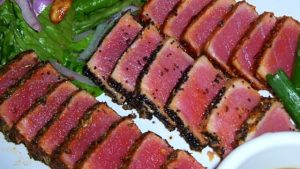 Locally, the case began with five reports of illness to Clark County Public Health in late August. Since then, the outbreak has grown to 30 cases in seven states and led to a recall of a California-based company’s tuna products.
Locally, the case began with five reports of illness to Clark County Public Health in late August. Since then, the outbreak has grown to 30 cases in seven states and led to a recall of a California-based company’s tuna products.


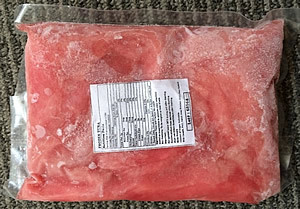

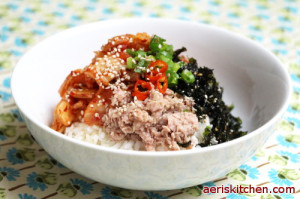
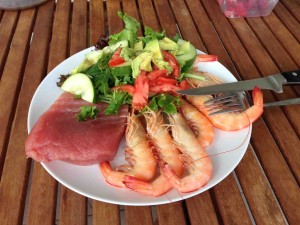
.jpg) outbreak.
outbreak.
 tuna sushi. The raw yellowfin tuna product
tuna sushi. The raw yellowfin tuna product 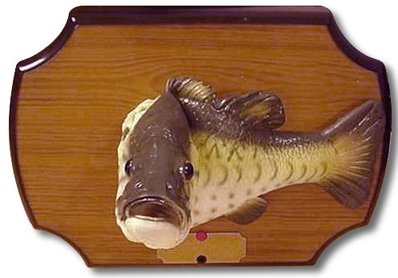
 some tuna that may not have been stored at the right temperature.
some tuna that may not have been stored at the right temperature.